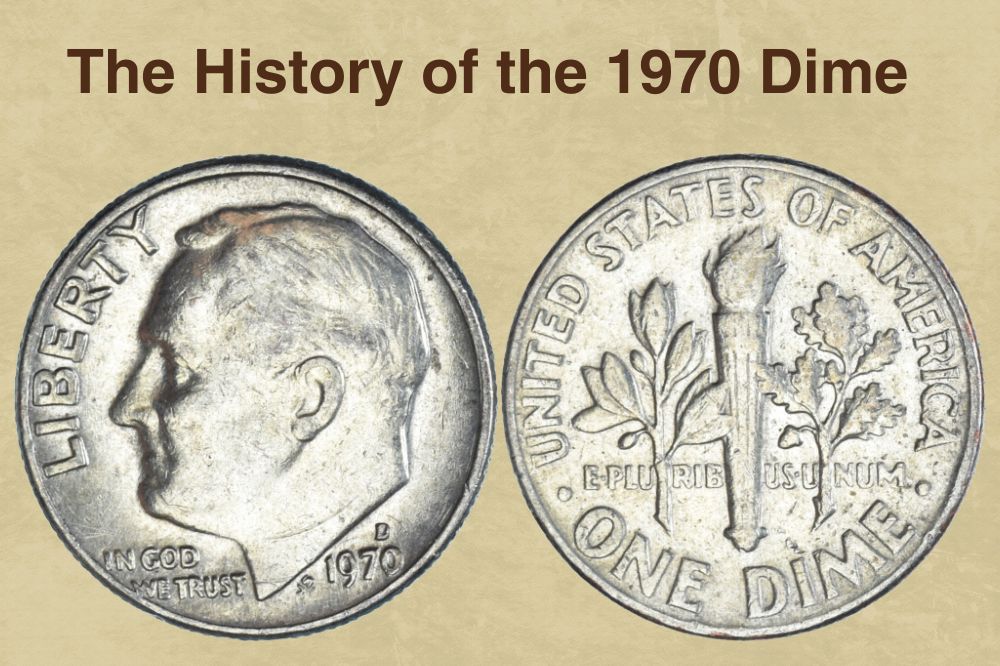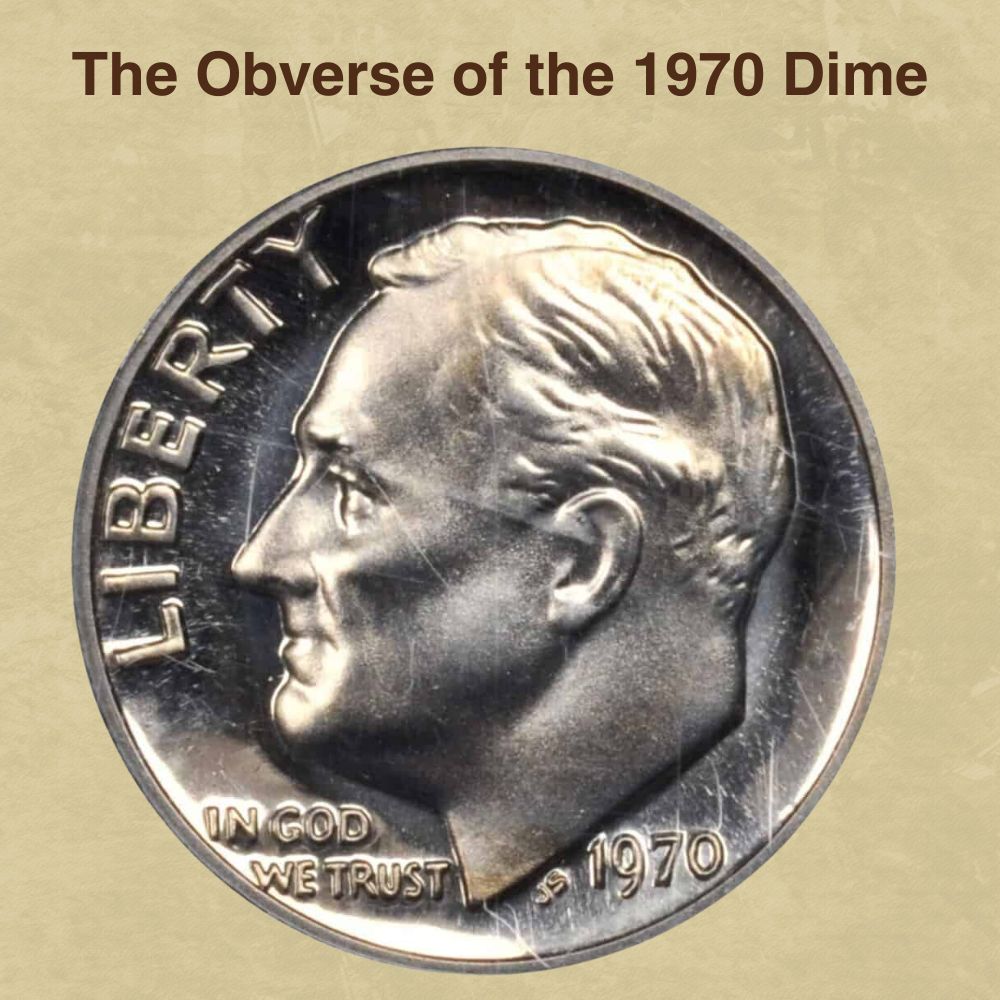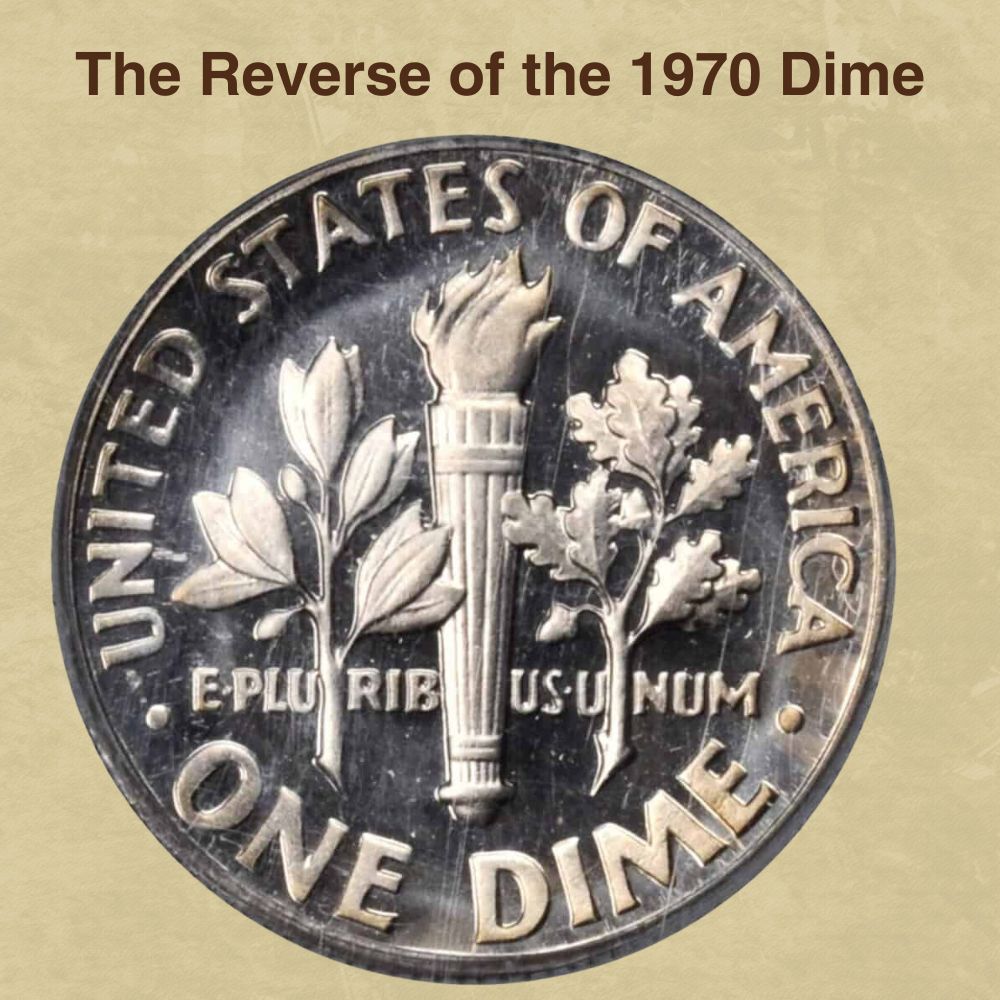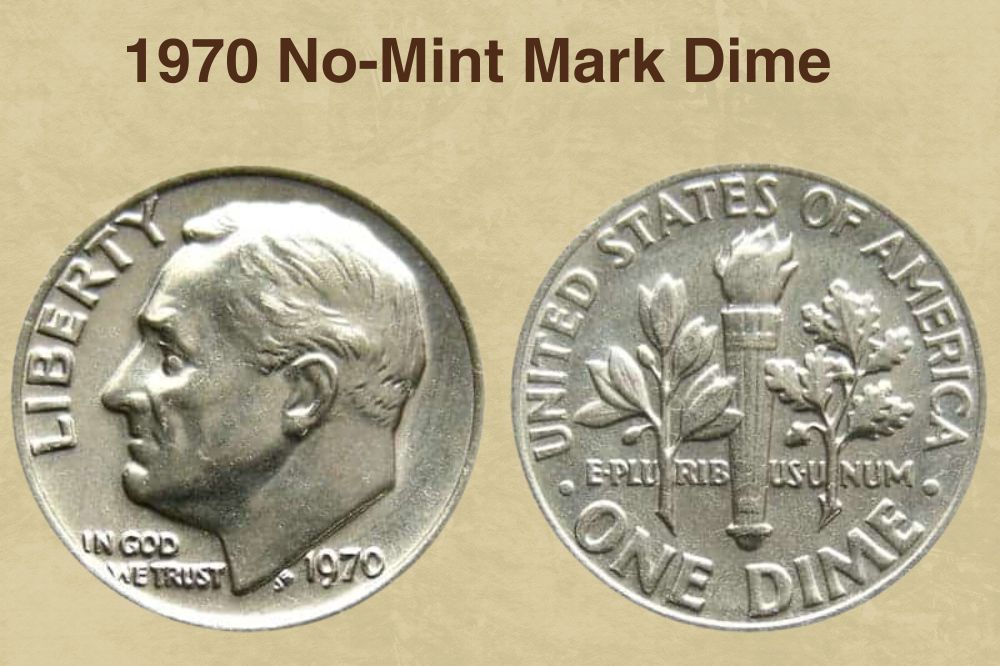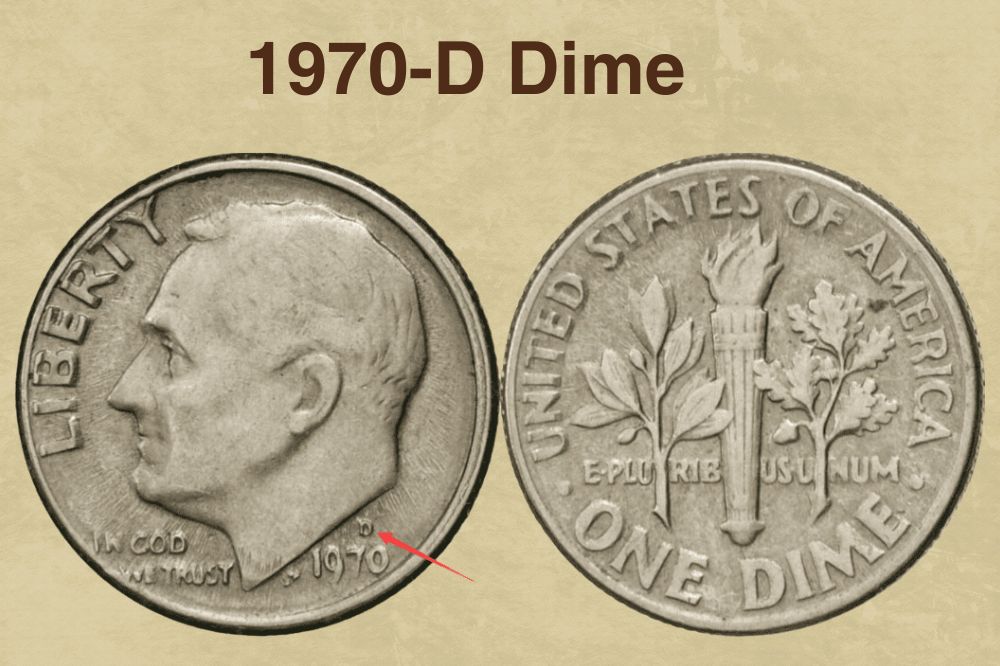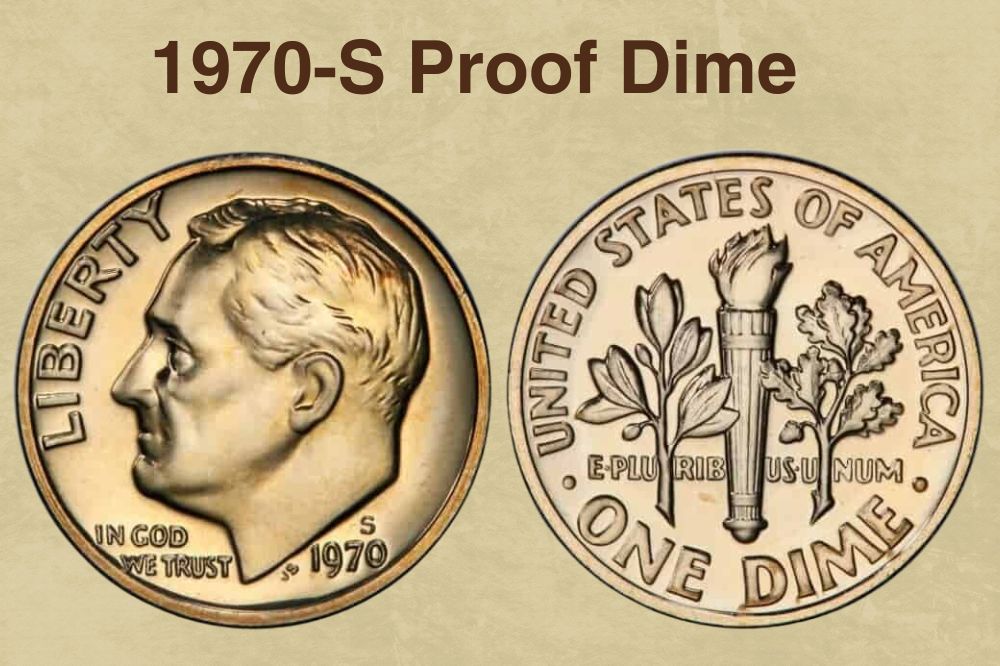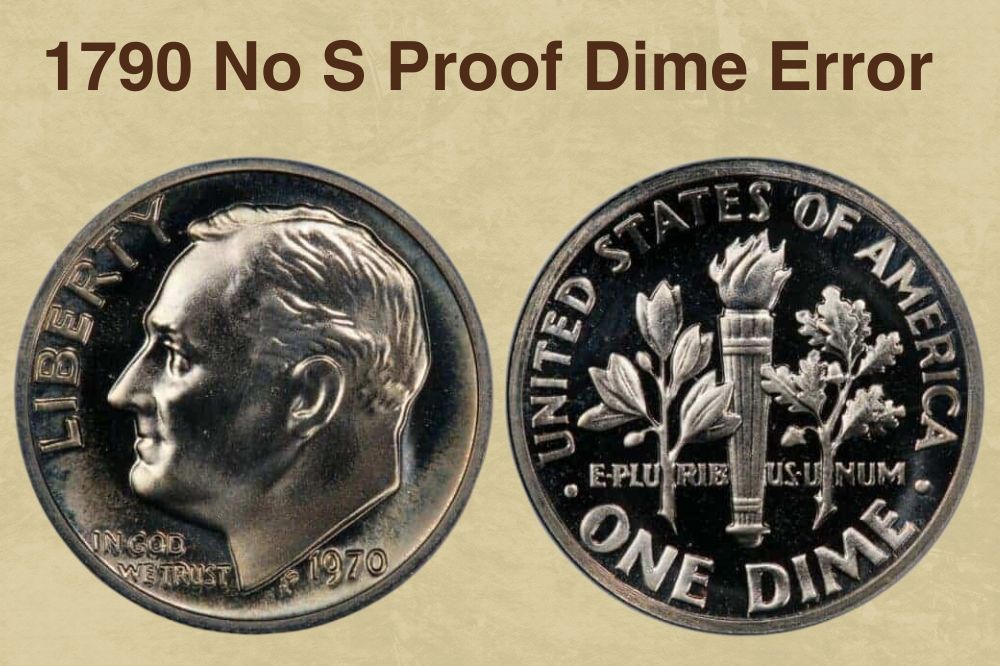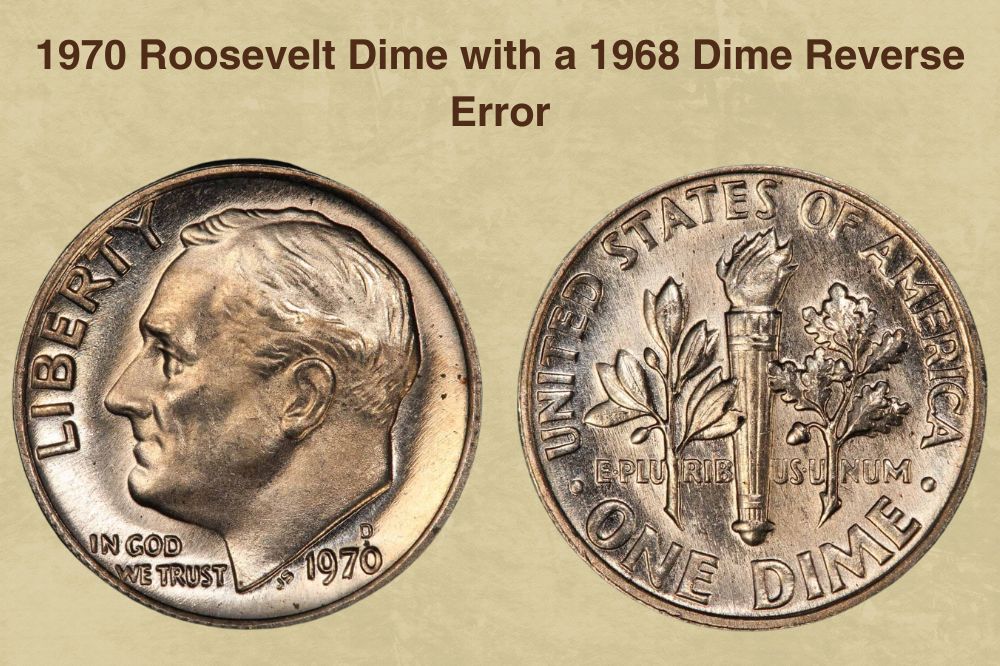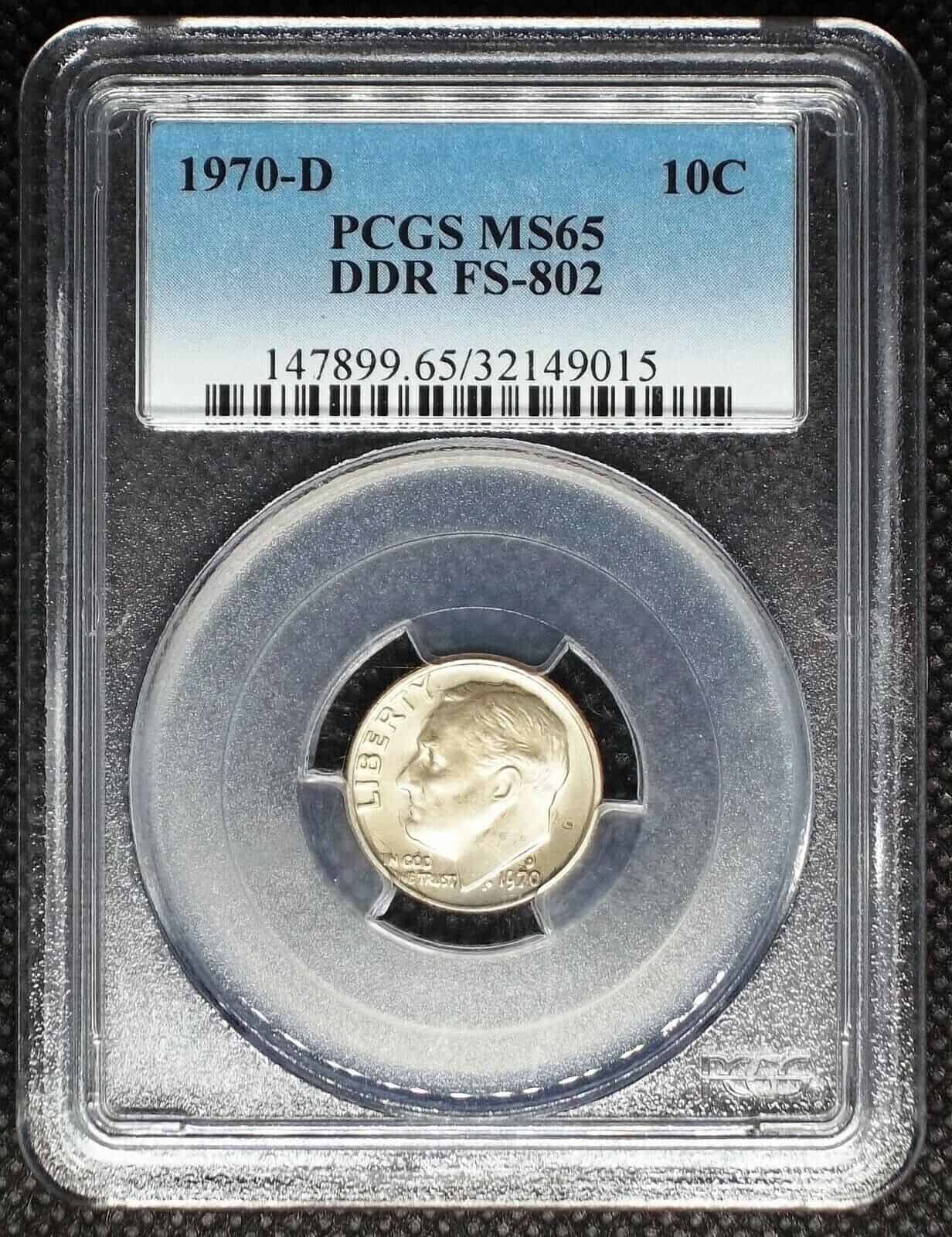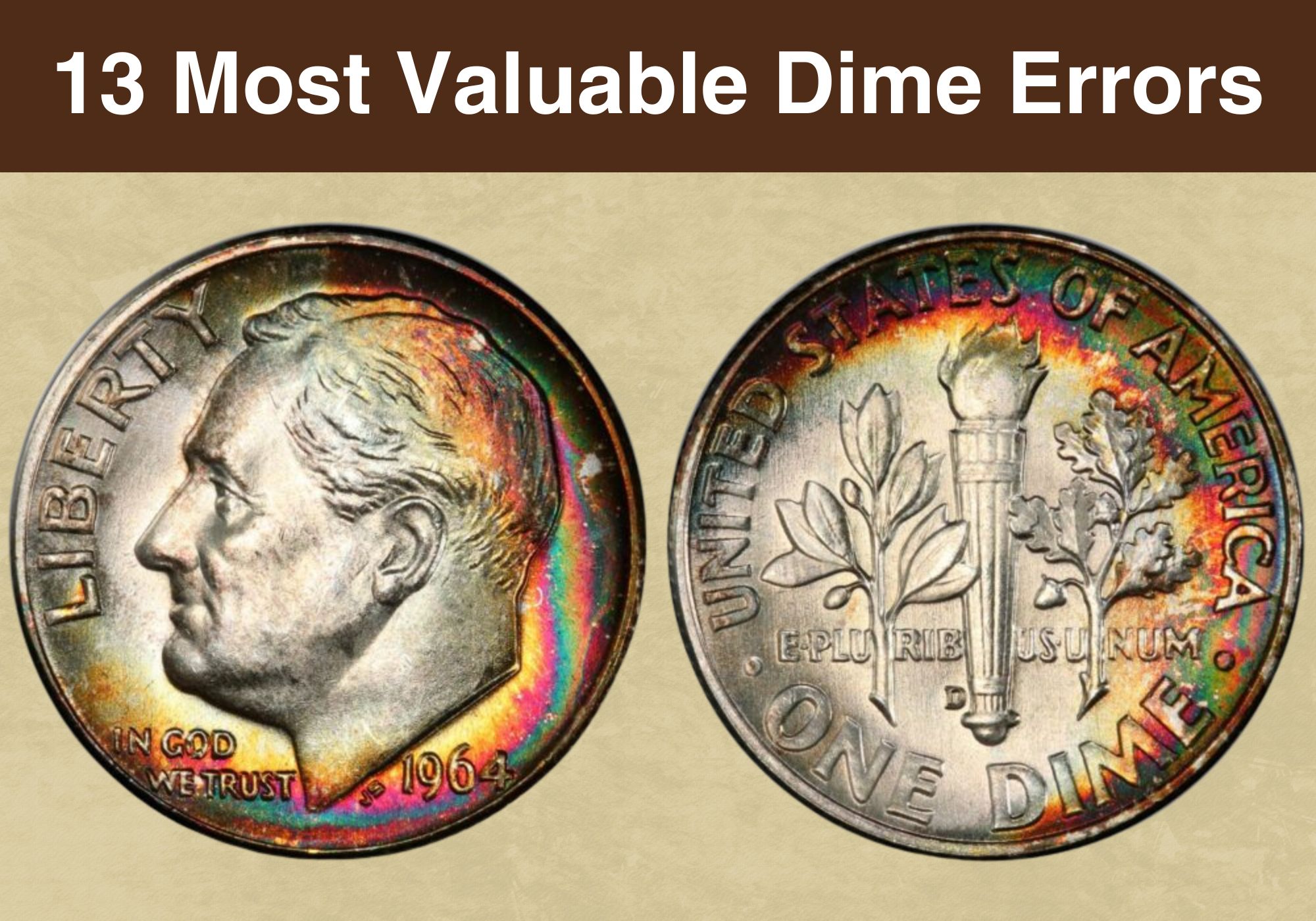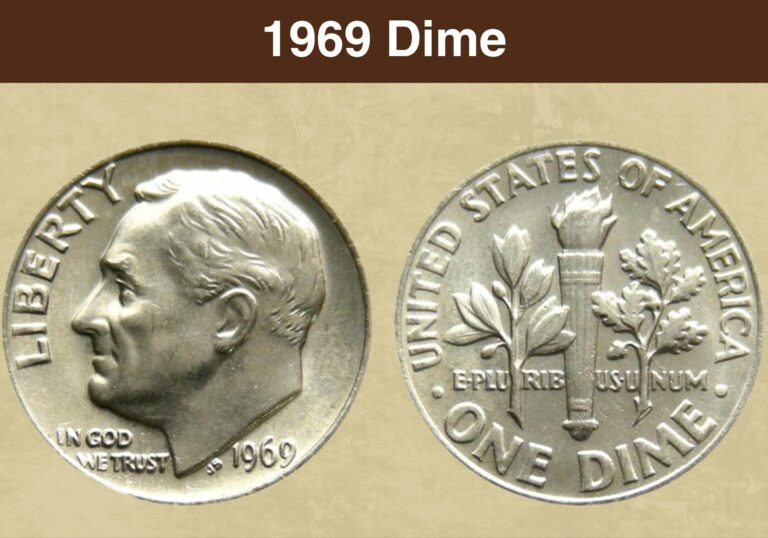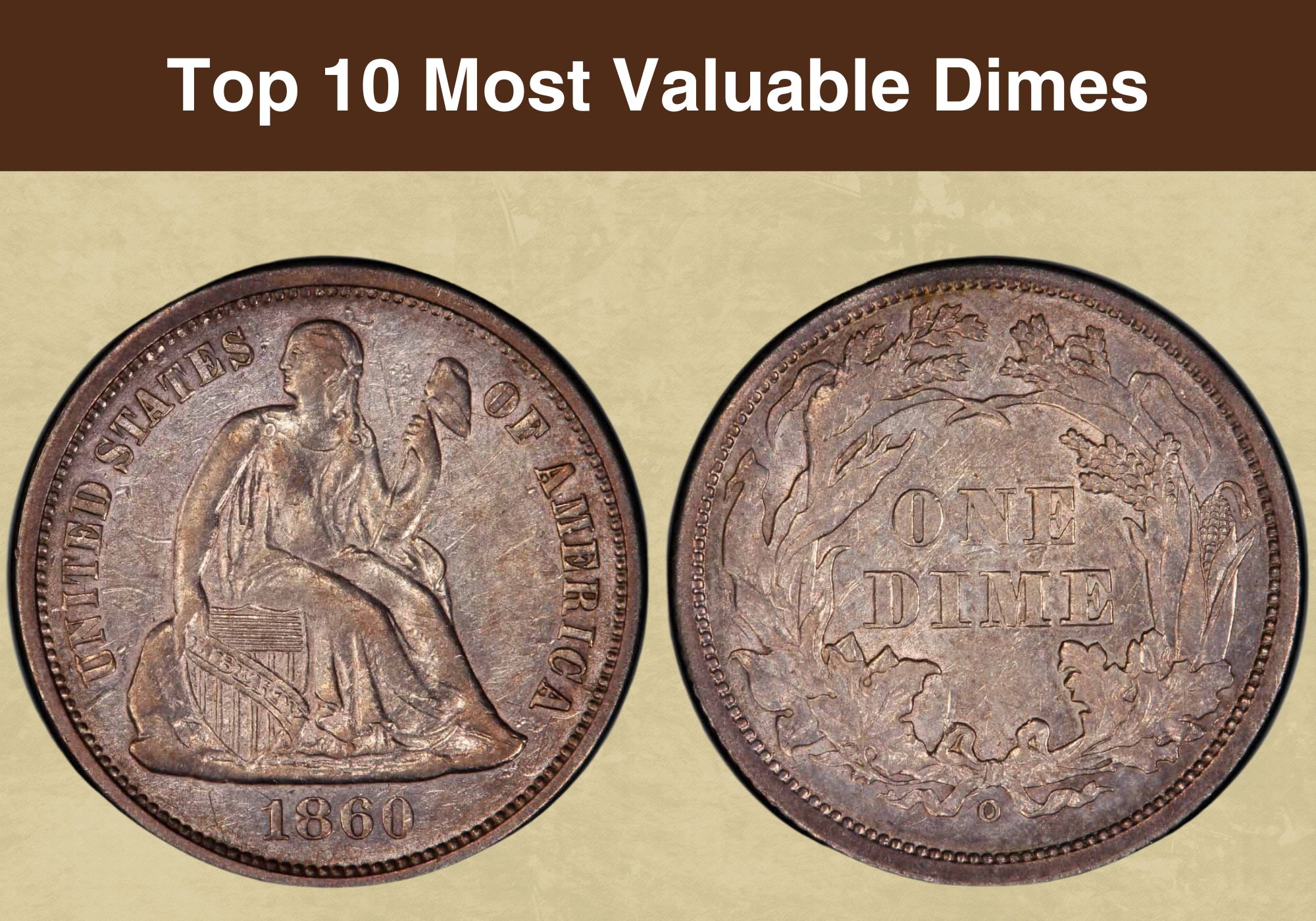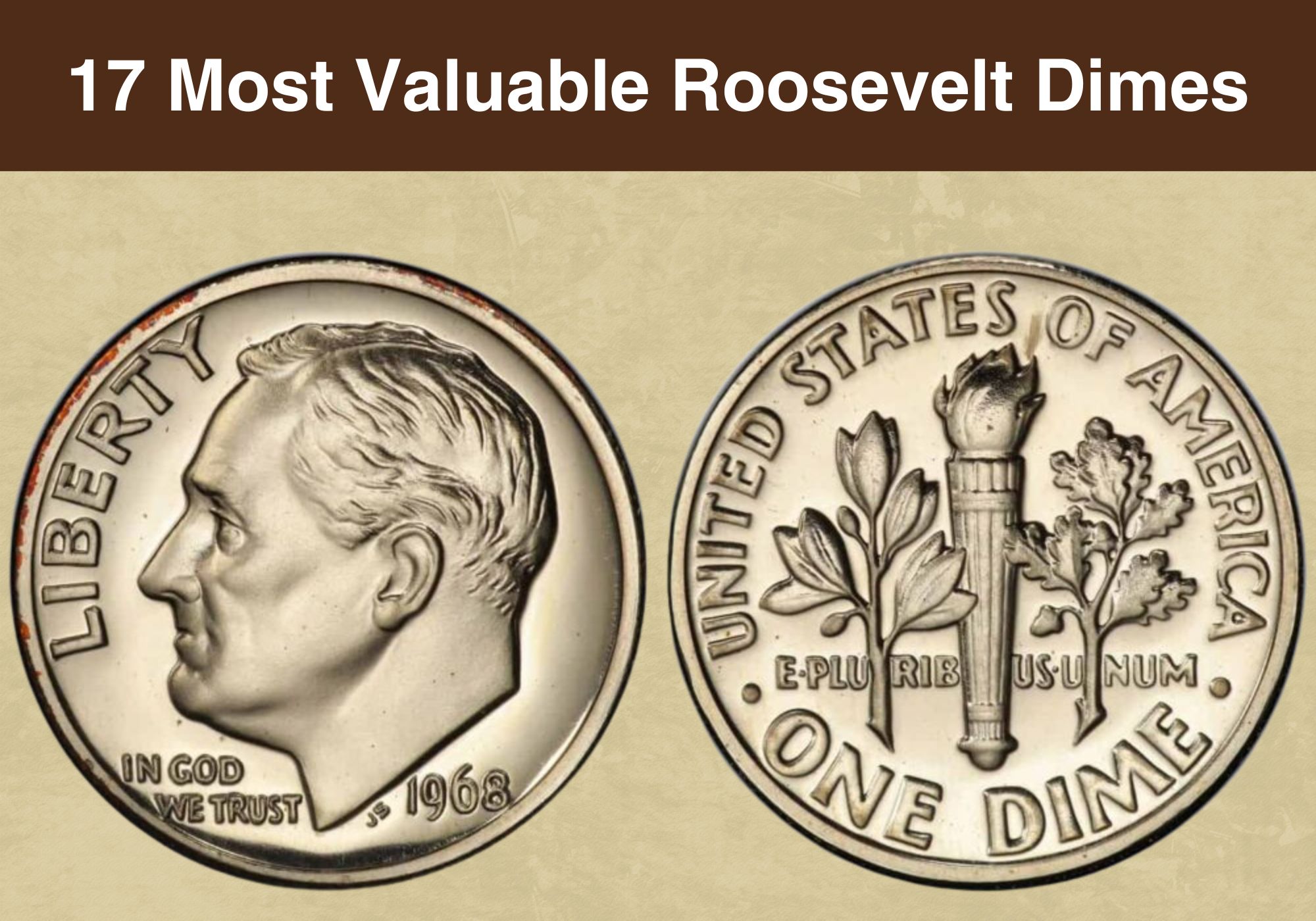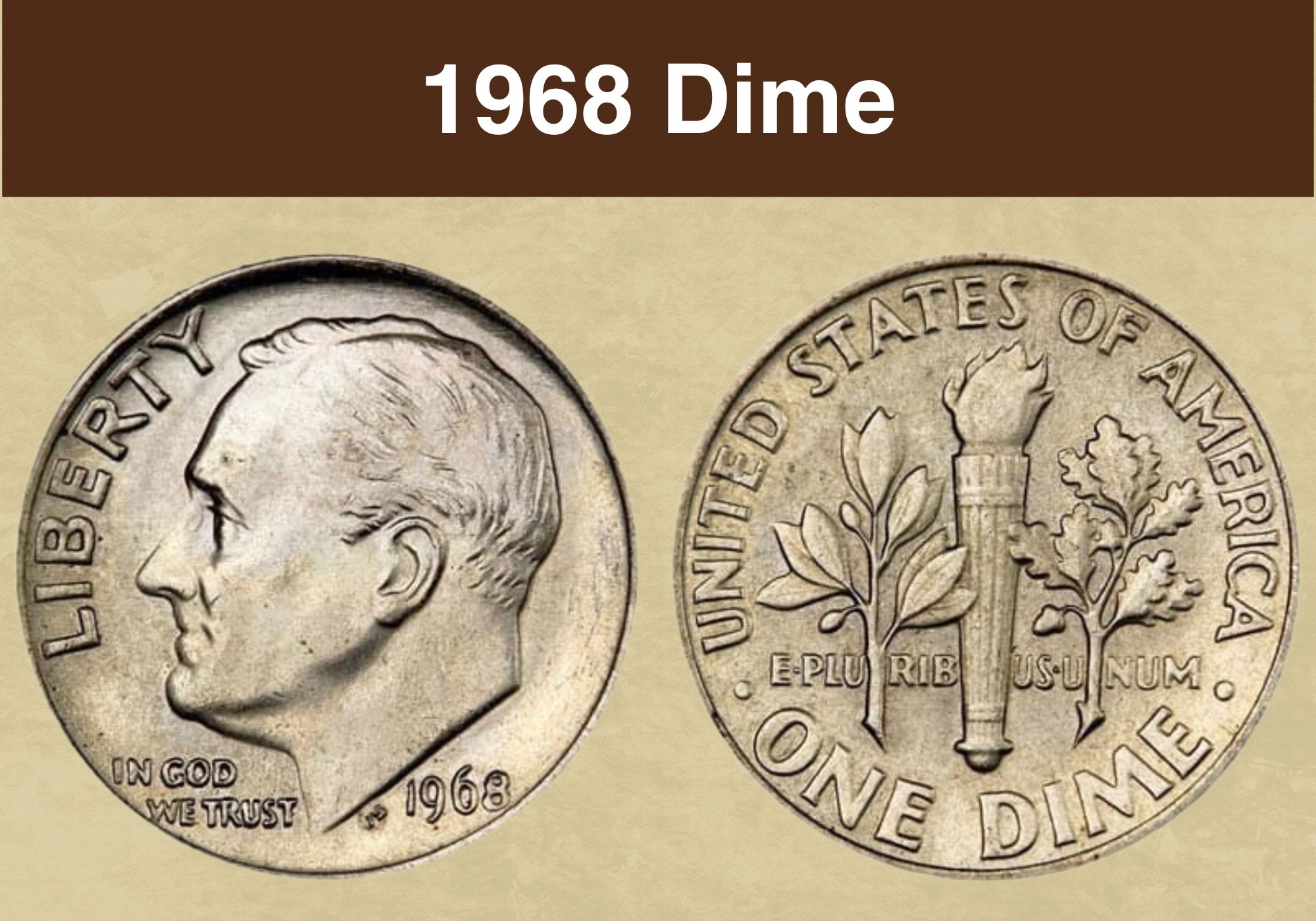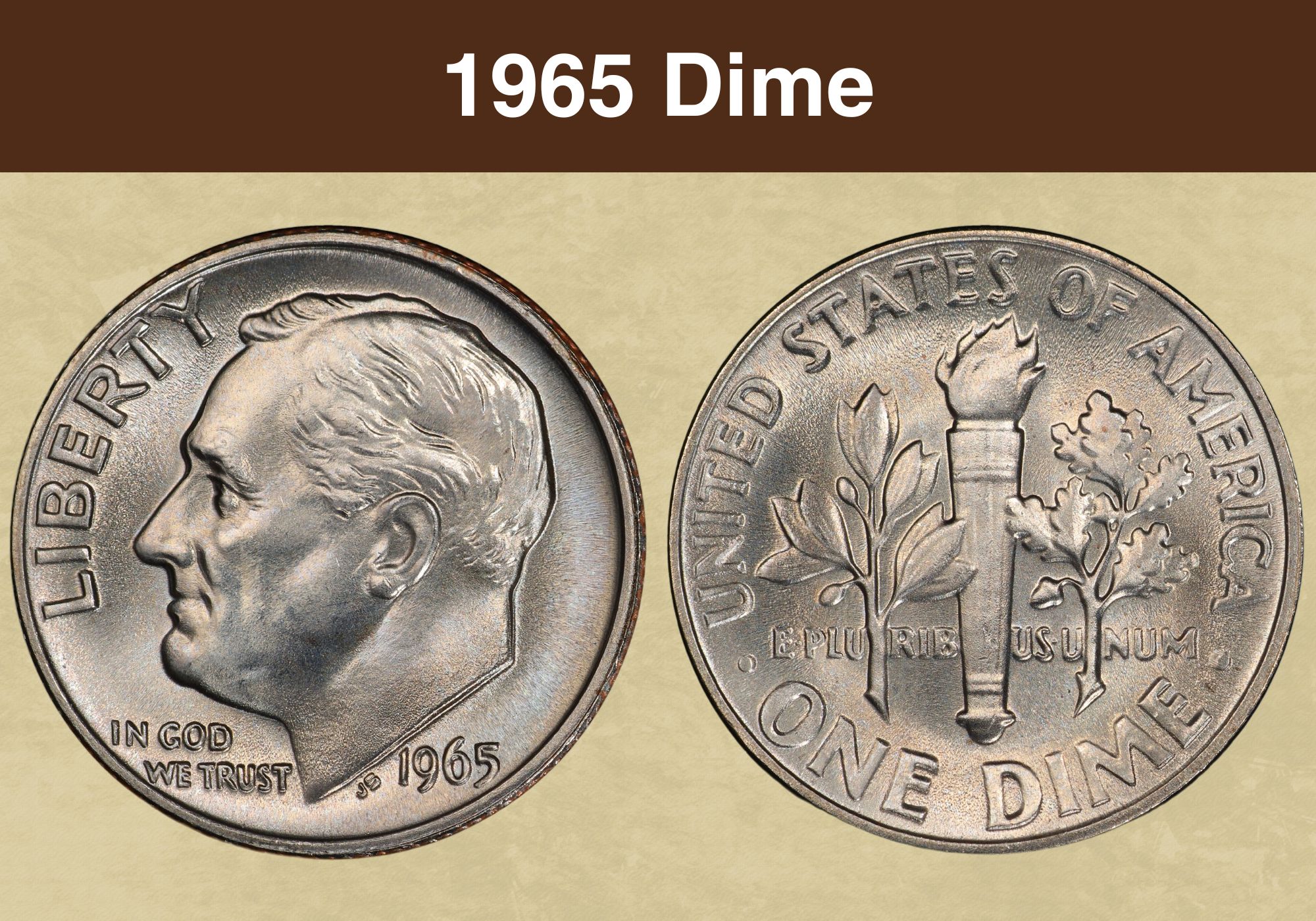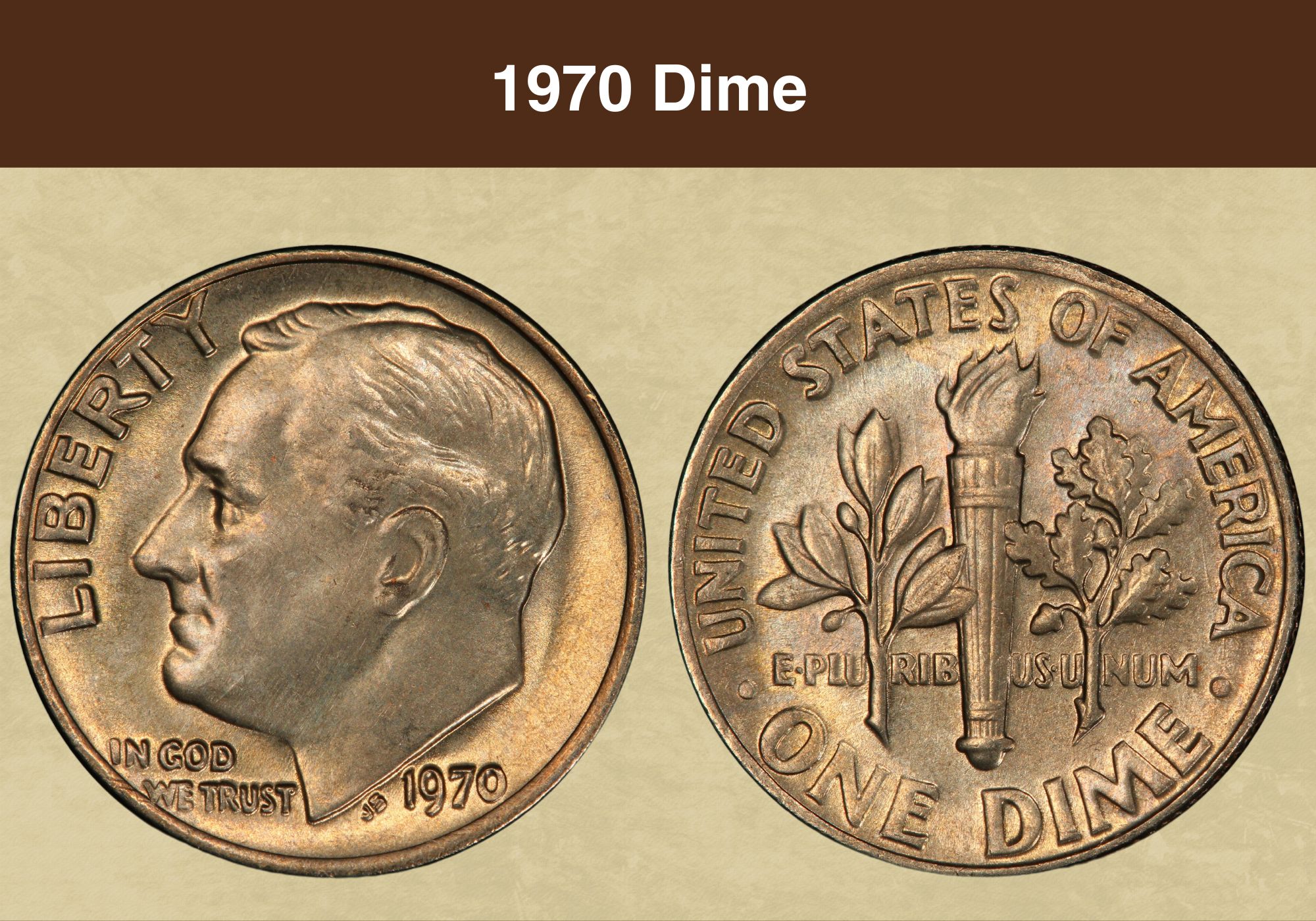
Coin Value Contents Table
Are you interested in collecting or selling 1970 dimes? You are probably curious how much you can get for this old coin.
Well, you’ve come to the right place!
This guide will teach you everything you need to know about the 1970 dime value to make a smart decision whether you are buying or selling.
Roosevelt dimes are still in circulation, and billions have been produced to date. These coins are common and generally worth their face value in circulated condition.
There are some exceptions, though, such as error varieties that can be worth tens or hundreds of dollars depending on the coin’s condition. But you definitely need to know what to look for to spot these rare oddities.
So, let’s get started and find out: How much is a 1970 dime worth?
1970 Dime Value Chart |
||||
| Mint Mark | Good | Fine | Extremely Fine | Uncirculated |
| 1970 Dime No-Mint Mark Value | $0.15 | $0.15 | $0.15 | $565 |
| 1970-D Dime Value | $0.15 | $0.15 | $0.15 | $75 |
| 1970 S Proof Dime Value | – | – | – | $27 |
The History of the 1970 Dime
The Roosevelt dime was first minted in 1946 and is still in circulation to date, making it one of the longest-circulating coins in American coinage history.
The dime commemorates one of the country’s most popular presidents, Franklin D. Roosevelt. Roosevelt died in 1945 after a long battle with polio. This crippling disease inspired him to contribute to the founding of the March of Dimes.
Initially founded as the National Foundation for Infantile Paralysis, the March of Dimes works to improve and support the health of mothers and their babies.
Aside from his great contribution to the organization, Roosevelt was also recognized for his leadership, which allowed the United States to navigate the perils of the Great Depression and Second World War.
Once the 25-year period elapsed, officials at the United States Mint saw it fit to replace the Mercury dime with a new coin in honor of Roosevelt. After 25 years, the Mint did not require congressional approval to replace a coin with a new one.
Under the Treasury Department, the Mint commissioned chief engraver John R. Sinnock to submit designs for the new Roosevelt coins. Following criticism, mostly from Republicans opposed to a Roosevelt coin and the Commission of Fine Arts, Sinnock changed his designs severally.
Eventually, the final design was settled upon, and the Roosevelt dime was struck and released into circulation on January 30, 1946, Roosevelt’s 64th birthday anniversary. Since then, the Mint has struck billions of Roosevelt dimes.
These coins were initially struck in silver but transitioned to a copper-nickel alloy in 1965. However, the design elements on the obverse and reverse of the Roosevelt dime have generally remained unchanged.
Also read: Top 17 Most Valuable Roosevelt Dimes Worth Money
Features of the 1970 Dime
Let’s now look at the unique attributes of the 1970 dime. Knowing what features to pay attention to can help you identify 1970 dimes that offer value for money.
The Obverse of the 1970 Dime
The obverse of the 1970 has a simple layout. Roosevelt’s left-facing portrait takes up most of the coin’s surface. It is said that Sinnock used photographs and sketches he had done to create the president’s portrait for the dime.
The word LIBERTY appears along the inner rim on the left while the country’s motto, IN GOD WE TRUST, is seen toward the bottom and still on the left.
Underneath Roosevelt’s truncated neck, you will notice the date and the controversial John Sinnock initials, JS, which the public once believed represented the Soviet dictator Joseph Stalin.
The Reverse of the 1970 Dime
The reverse of the 1970 dime is a bit more detailed. This side of the coin depicts a torch at the center, symbolizing American liberty.
The torch is flanked by an olive branch on the left and an oak branch on the right, representing peace and strength, respectively.
The motto, E PLURIBUS UNUM, appears horizontally across the coin’s surface.
The country’s name, UNITED STATES OF AMERICA, appears around the top while the denomination, ONE DIME, is shown at the bottom, completing the reverse design.
Other Features of the 1970 Dime
The 1970 Roosevelt dime comprises a pure copper core and an outer cladding comprising 75% copper and 25% nickel. This Mint began using this copper-nickel alloy in 1965, abandoning the precious metal silver.
This reeded coin is relatively small, measuring 17.90 millimeters in diameter and weighing 2.27 grams.
Although the Philadelphia, Denver, and San Francisco mints produced dimes in 1970, only the Denver and San Francisco coins bear a mint mark. You will notice the mint marks D and S on the obverse just above the date.
1970 Dime Grading
When collecting Roosevelt dimes, hobbyists primarily focus on uncirculated pieces to get the most value for money.
When grading uncirculated coins, check that the original mint luster is intact, especially on high points on the obverse and reverse.
On the obverse, pay attention to Roosevelt’s hair. The fine lines should be well-defined with no smoothness or dulling. Also, observe the area underneath his eye and around his cheek; these high spots should retain mint luster. Don’t forget the jawline, another high spot prone to wear.
On the reverse, inspect the flames from the torch, ensuring the original mint luster is in place, and no smoothing is visible. Pay attention to the outer edges of the oak and olive branches for any signs of smoothness.
| # | Grade |
|---|---|
| 1 | Basal State-1 |
| 2 | Fair |
| 3 | Very Fair |
| 4, 5, 6 | Good |
| 7, 8, 10 | Very Good |
| 12, 15 | Fine |
| 20, 30 | Very Fine |
| 40 | Extremely Fine |
| 50 | About Uncirculated |
| 60 | Mint State |
| 65 | Mint State |
| 70 | Mint State |
Please check our grading guides to know your coin scale, It’s the necessary step to know the exact value of your coin.
Check out now: How to Grade Roosevelt Dime?
1979 Dime Value Guides
So, how much is a 1970 dime worth?
The 1970 dime value largely depends on the coin’s condition, rarity, and mint mark. The occurrence of error varieties can also significantly boost the value of your coin.
Dimes designated with Full Bands are considered to have a superior strike and are worth more in the marketplace. Full Bands refer to the horizontal lines around the top and bottom of the liberty torch on the reverse.
There are three variations of the 1970; we’ll explore the value of each below. These varieties include the following:
- 1970 No-Mint Mark Dime
- 1970-D Dime
- 1970-S Proof Dime
1970 No-Mint Mark Dime Value
The Philadelphia mint produced an estimated 345,570,000 Roosevelt dimes in 1970. These coins do not have a mint mark.
If you think this is a lot of coins, you are right! Since introducing the dime in 1946, the Mint has struck numerous Roosevelt coins yearly, and 1970 is no different.
Due to the large mintage, the 1970 no-mint mark dimes are very common and plentiful across all grades. You can expect about $0.15 to $0.35 for circulated examples in this series.
Gem pieces are surprisingly affordable, allowing you to get your hands on an MS65 for only $10. There is a noticeably large price difference among mint state specimens; this can be attributed to the scarcity of the true gem pieces graded MS67 and above.
While a 1970 no-mint mark graded MS66 will cost only $75, one designated MS67 will fetch as much as $565.
A rare Full Band example graded MS66 was sold in 2018 at an online auction for an impressive $2,295.
1970-D Dime Value
The mint at Denver recorded the highest mintage in 1970, producing a whopping 754,942,100 Roosevelt dime that year alone.
With such a high mintage, the strike quality is likely average at best, and the Denver dimes were no exception. In addition, these coins are plentiful in circulated and uncirculated condition as more and more coins are released from preserved rolls.
You can identify 1970-D dimes by the D mint mark on the obverse just above the date. Circulated examples are worth between $0.15 and $0.35.
Uncirculated 1970-D dimes are equally affordable, especially for low-mint grade pieces, from MS60 to MS64. With only $1, you can get your hands on a nice-looking MS60, and you only need about $20 to acquire a gem-quality specimen designated MS66.
So common are 1970-D dimes across all grades that the most specimen graded MS68 was sold for only $646 at a 2014 Heritage Auctions sale. This particular piece boasted a Full Band designation.
Keep in mind that the lackluster strike also contributed to the scarcity of gem pieces in the 1970-D series. Even coins with a mint state designation are not that well-struck and will, therefore, not attract a premium.
1970-S Proof Dime Value
The San Francisco mint struck only proof coins, accounting for 2,632,810 half dollars in 1970.
These coins were sold to collectors and numismatic enthusiasts and were struck using special dies to produce high-quality coins with brilliant luster and frosted surfaces.
As was with the 1968 Roosevelt proof dimes, some 2000 pieces of 1970 S proof dimes do not bear a mint mark S on the obverse above the date.
Out of a population of over 2.6 million, about 0.8% of 1970 proof dimes do not have a mint mark, making these pieces somewhat of an oddity and, therefore, of interest to collectors.
The other 1970 proof coins with an S mint mark are fairly common and easily accessible, mostly due to the large mintage and average strike. However, the population dwindles among Cameo and Deep Cameo pieces, which are extremely hard to come around.
An ordinary 1970-S proof coin graded MS69 will fetch up to $27, while a Cameo piece of the same grade is worth about $35. Deep Cameo examples are attractive with frosted surfaces and radiating luster, and these pieces will cost $75.
Also read: Top 17 Most Valuable Mercury Dimes Worth Money
Rare 1970 Dime Errors List
Overall, 1970 Roosevelt dimes will not attract a premium, especially in circulated condition. There aren’t as many Roosevelt errors worth a lot, but some errors can significantly improve your coin’s value.
Here are some 1970 dime errors worth money:
1970-D Off-Center Strike Dime Error
Off-center strikes happen when the working die or planchet is misaligned, resulting in the design being struck away from the center and more toward the edge of the rim.
This error is mostly seen in the 1970 Roosevelt dimes struck in Denver. On some coins, you will notice that Roosevelt’s portrait appears more toward the edge so that his head almost touches the rim.
A 1970-D off-center strike dime error can fetch between $150 and $225, depending on the coin’s overall condition.
1790 No S Proof Dime Error
Most 1790-S proof dimes came with the mint mark S on the obverse above the date. But, about 2,000 pieces out of the 2.6 million struck that year were missing the mint mark.
These coins generate a lot of fascination among collectors, although the Mint has never explained why the coins were struck without a mint mark.
Collectors will pay as much as $700 to $800 for 1970 No-S proof dime or more for Cameo and Deep Cameo pieces.
1970 Roosevelt Dime with a 1968 Dime Reverse Error
For unknown reasons, mint workers struck a planchet with a 1970 obverse with a 1968 proof reverse die. Because the 1968 proof reverse die had been used two years earlier, it was bound to display a weal strike.
This happened with the 1970 dime, in which a weak 1968 die was used to strike the reverse. The result was a 1970 dime in which the design detail, including the Liberty Torch and inscriptions, were dull and barely there.
Such an error is worth about $20, but prices can increase to $50 for above-average coins in mint state.
1970 Doubled Die Reverse Dime Error
Doubled die reverse errors are common across all grades in all three Minting facilities.
This is an error in which some or all of the coin’s design elements, including portraits and inscriptions, show some doubling.
The doubling results from the design being transferred onto the mother die at slightly different angles, resulting in visible overlapping, known as doubling.
Doubled die errors can occur on the reverse and obverse, but with the 1970 dime, many of the coins with this error have it on the reverse. You will notice visible doubling and, in some cases, triple overlapping on the inscription UNITED STATES OF AMERICA and the denomination at the bottom of the coin on the reverse.
A 1970 doubled die reverse dime error usually sells for $20 to $30, but this can increase to $90 for coins in mint condition.
Also read: 13 Most Valuable Dime Errors Worth Money
Where to Sell Your 1970 Roosevelt Dime ?
Now that you know the value of your coins, do you know where to sell those coins online easily? Don’t worry, I’ve compiled a list of these sites, including their introduction, pros, and cons.
Check out now: Best Places To Sell Coins Online (Pros & Cons)
FAQ
How do I know if my 1970 dime is worth money?
Generally, 1970 dimes are only worth their face value of $0.15 to $0.35. Your dime might be worth much more if you notice a true error; have a professional coin grading service inspect your coin to determine the presence of a known error. Dimes with full bands on the Liberty Torch are considered well-struck and may be worth more money.
What is a 1970 no s dime?
A 1970 no S dime is an interesting coin variation from this series. As the name suggests, this coin is a proof identifiable by its brilliant luster and design details but lacks the mint mark S seen in proof dimes from the San Francisco mint. According to the Mint, there are only about 2,000 1970 no S dimes, making these coins rare and highly sought after.
What makes a 1970 dime rare?
With more than 1 billion struck, the 1970 dime is not rare by any measure. However, some exceptions, such as coins with errors, Full Bands on the Liberty torch, and those without a mint mark S, are fairly rare and can be more valuable.

